OVERVIEW OF QUESTIONS AND ANSWERS SERIES
January to June 2000
| January | February | March | April | May | June |
January
January 2000 (Part 1)
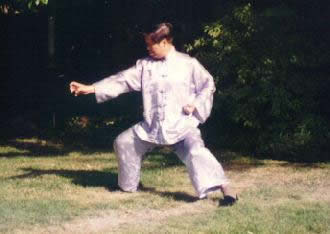
People may learn external forms from videos, but these are actually not what I teach in my chi kung or kungfu classes. What I actually teach in my chi kung classes are skills to manage energy, and in my kungfu classes skills for combat efficiency, internal force development and spiritual cultivation. Anyone who thinks that such skills can be learnt via videos do not know what chi kung or kungfu really is. Hence, I have not produced videos for the purpose of self-instruction.
Click here to enter.
January 2000 (Part 2)
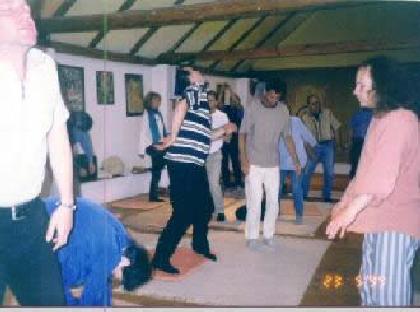
The shortest distance is the straight line bwteeen the two points. To me it is a simple question with a simple answer, unless we wish to make it difficult, in which case we may read any meaning into the question and give any answer. We may, for example, say there are actually no points (which can be proven scientifically), and therefore there is no shortest distance, or that as points are only mental construct the shortest distance between them is what our mind thinks.
Click here to enter.
January 2000 (Part 3)
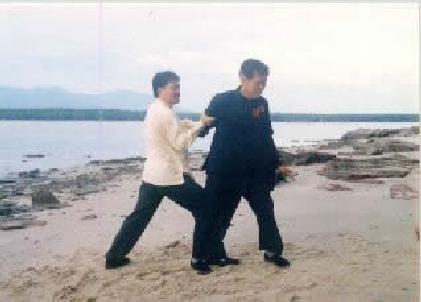
We now have an interesting situation whereby although the word "wushu" literally means "martial art", in practical usage it is a demonstrative sport; and although the word "kungfu" literally means "work", it is a martial art. To say that all Chinese martial arts are wushu is like saying all persons are men, insisting that the word "mankind" refers to humankind.
Click here to enter.
February
February 2000 (Part 1)
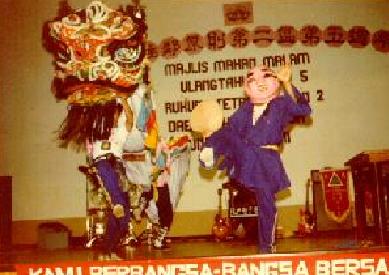
The meditative Wuji Stance and "Grasping Sparrow's Tail" are wonderful exercises. If you practise them everyday (missing a session once a while is permissable), you would feel noticeable results in six months. If you practise them of and on, even if for years, you would only waste your time.
Click here to enter.
February 2000 (Part 2)
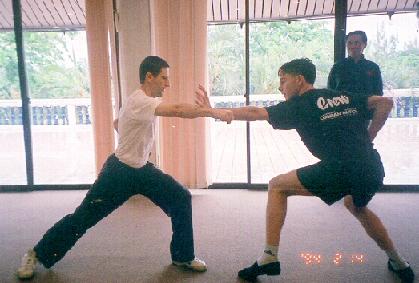
Shaolin Kungfu is the oldest martial art style in the world. This does not mean that there were no martial arts before Shaolin, but before this time martial arts were practised and taught on an individual basis, like western boxing or wrestling is today. It was at the Shaolin Monastery that martial arts first became institutionalized, and was passed down as a systemmatic style. In other words, before Shaolin there was only martial art, but without any specific names. It was only after Shaolin that there were names like Wuzu martial art, Eagle Claw martial art, Praying Mantis martial art, Taiji martial art, etc.
Click here to enter.
February 2000 (Part 3)
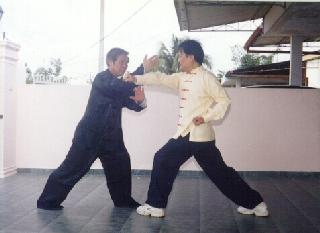
In Tai Chi Chuan this wave concept suggest that you flow with your opponent's movements instead of clashing against them. For example, if your opponent gives you a powerful thrust punch, instead of blocking it you deflect it aside along its punching momentum, as in the "peng" technique of "Grasping Sparrow's Tail". As he withdraws his arm, you follow his withdrawing momentum and manoeuvre him into an awkward position, using the "lu"
Click here to enter.
March
March 2000 (Part 1)
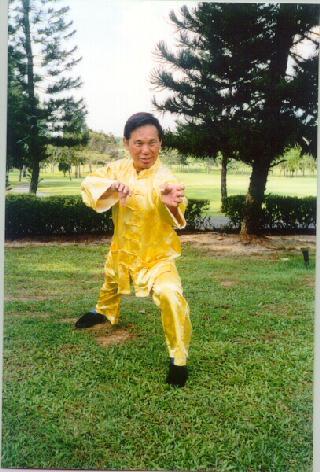
"Wushu" initially means martial art, and is what the West would call "kungfu". But wushu today is being promoted as a demonstrative sport, without its martial function, so that it has become quite distinctly different from "kungfu". To compound the confusion, many people, especially the Chinese, normally refer to martial arts as "wushu", and some insist that the term "kungfu" means "work".
Click here to enter.
March 2000 (Part 2)
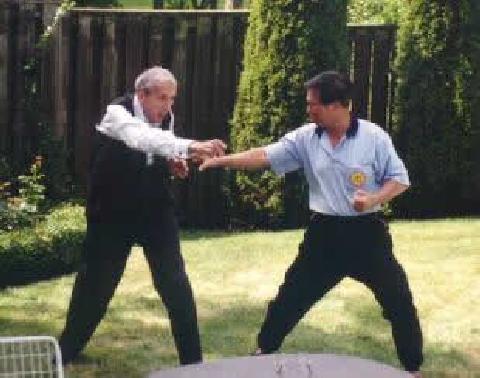
No mind, or "wu-xin" in Chinese, is actually all mind. It is a Zen term referring to a "state" where an adept has discarded his personal mind and attained the universal mind. This state of no mind may be attained at different levels.
Click here to enter.
March 2000 (Part 3)
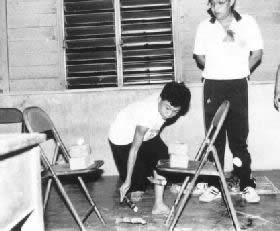
Chi kung uses a different paradigm. It may be incredible to those used to conventional medical thinking, but in chi kung it is not necessary to know the cause of the disease! In chi kung, which uses the Chinese medical paradigm, there is only one disease, and it is called yin-yang disharmony. The task of the chi kung master is to help his sick students restore yin-yang harmony.
Click here to enter.
April
April 2000 (Part 1)
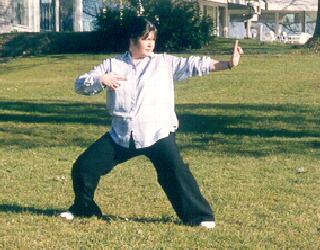
the crucial point is that one must acquire the skills from a master who has the skills, and not just learn the techniques from someone who knows the techniques. It is difficult for the uninitiated to apreciate this point even though they may believe its vierity. In other words even if I explain in details some techniques to acquire a particular skill, someone following my explanation exactly on his own and without my personal guidance may still not acquire the skill.
Click here to enter.
April 2000 (Part 2)
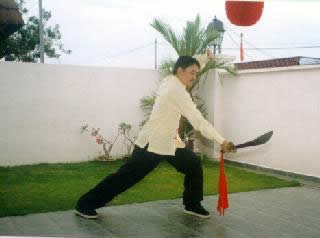
It is true that masters are rare, and many of these rare masters, especially in the East, do not want to be known. This may come as a very big surprise to many westerners. Some people seem to tbink that a master must teach if people wish to learn from him, or that when they learn from a master they are doing him a favour. Anyone with some knowledge of kungfu history or culture, will understand how ridiculous these two mis-conceptions are.
Click here to enter.
April 2000 (Part 3)
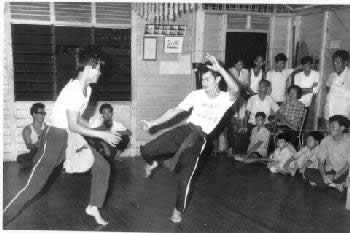
Not a single kungfu master in the past used gloves for sparring. Indeed I believe that any instructor asking his students to use gloves, himself has had no experience of genuine kungfu sparring. Using gloves to spar, especially without methodical preparation, almost always results in the students resorting to boxing or kick-boxing techniques.
Click here to enter.
May
May 2000 (Part 1)
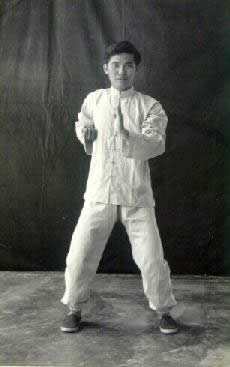
I clearly remember years ago I asked my master that since our arts were so very useful, why did he not tell the world. He said I was naive. He said, "let those who desire it and are deserving, come and learn". I did not understand him them, but now I do.
Click here to enter.
May 2000 (Part 2)
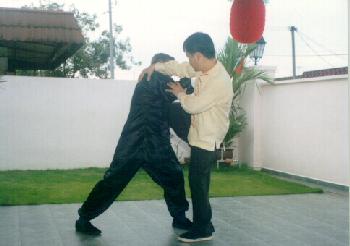
Wrestling is a sport, and is not advisable in real fighting. If a wrestler were to go low and attempt to grasp the legs of a kungfu master, the master would bring one leg backward to a low Bow-Arrow Stance and strike the crown of the wrestler's head, killing the latter with just one blow. Alternatively the kungfu master could execute a palm strike to the wrestler's back, injuring him seriously.
Click here to enter.
May 2000 (Part 3)
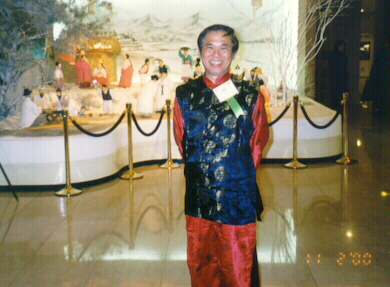
Diluted qigong, Tai Chi and even diluted Shaolin as well as modern wushu have nothing to do with self-defence. Typically students of these arts spend little or no time to practise using their arts for combat. Hence, with the exception of diluted Shaolin, one may have practised these arts for years, or have won international titles, yet he will be no match at all against another who have practised other martial arts like karate, taekwondo, kickboxing, western boxing and wrestling, for a few months. Diluted Shaolin students may practise sparring, but they almost never use the techniques in the art; they borrow techniques from other martial systems.
Click here to enter.
June
June 2000 (Part 1)
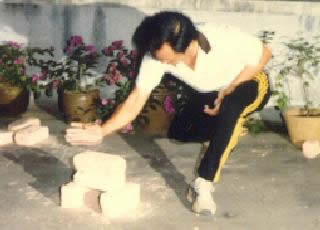
Later you may experience what is know as "the doubt", a period of time when you will question whether what the masters said were true, such as the so-called objective world is actually an illusion, our physical body is actually a body of energy, and we never die, we have countless lives. If you persist in your training, you will pierce the doubt and directly experience, not just believe, that all the masters said is true. You will attain a spiritual awakening.
Click here to enter.
June 2000 (Part 2)
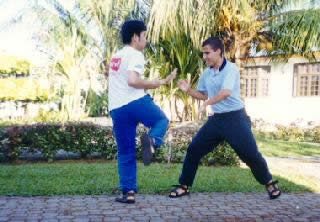
It is not a norm for kungfu schools to have written laws. Some schools may have written laws and they differ from one school to another. Nevertheless, virtually all kungfu schools follow one unwritten law, and it is "Jun Si Chong Tou" (in Cantonese pronunciation). Literally word by word this all-important unwritten law means "Respect Master Emphasize Morality".
Click here to enter.
June 2000 (Part 3)
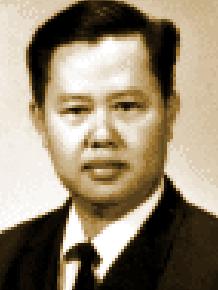
That is why when students asked their master to teach them Zen, the master might reply like "Have you eaten your meals?" or "Go and wash your dishes". How these questions and answers are interpreted, depends on numerous factors, such as the students level of development and the teacher's intention. One interpretation is that Zen is in our everyday life, you need not go into a forest or a temple to practise Zen. Another interpretation is that Zen is practical -- you do Zen, not study Zen.
Click here to enter.
